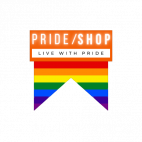Gay Culture Through the Generations: Struggles, Evolution, and Enduring Legacy
Gay culture has always existed, but its visibility and forms of expression have transformed remarkably over time. What unified earlier generations may not resonate in the same way with today’s youth. Still, a central theme continues: the desire to create shared spaces, signals, and cultural references that shape a collective identity.
In this article, we trace the evolution of gay culture across generations, from the hidden lives of the past to the vibrant, digitized queer era of today.
Before Visibility: The Pre-1970s Era
A Life Lived in Secrecy
Prior to the 1970s, homosexuality was widely criminalized and deemed a mental illness in many societies. Living openly came with great risk, prompting the creation of a coded subculture where self-expression was carefully concealed. Key elements included:
- Wearing subtle markers like colored handkerchiefs or symbolic jewelry
- Gathering in discreet locations such as private clubs, anonymous bars, or public parks
- Using hidden language or signals to identify fellow community members
This era shaped a community founded on resilience and shared silence, where strong emotional bonds often grew from mutual understanding and the risks of being discovered.
Lighting the Fire: The Beginnings of Activism
The late 1960s sparked a defining moment in LGBTQ+ history. The Stonewall Riots of 1969 in New York ignited the modern gay rights movement. From this turning point emerged a culture centered on pride and protest. Early Pride marches combined political defiance with celebration and paved the way for future generations to continue the fight for visibility and equal rights.
1980s–90s: Crisis, Community, and Cultural Resistance
The Shadow of HIV/AIDS
The emergence of the HIV/AIDS epidemic in the 1980s devastated the gay community, leaving a major cultural and emotional impact. The crisis gave rise to:
- Grassroots activism and mutual support networks built around care and survival
- An outpouring of politically charged art—through theater, visual media, film, and literature
Despite grief and widespread stigma, this generation forged a bold, proud identity that demanded dignity and human rights, even in the face of tragedy.
Breaking Into the Mainstream
By the 1990s, LGBTQ+ themes began to appear more frequently in mainstream media. While stereotypes persisted, shows and movies increasingly included queer narratives, signaling a slow but meaningful shift toward greater representation and acceptance.
2000s: Toward Greater Recognition and Integration
Legal Progress and Social Change
The early 2000s witnessed major strides in LGBTQ+ rights, including partnership recognition and marriage equality—notably France’s legalization of same-sex marriage in 2013. Rather than living in secrecy, newer generations found themselves navigating a world where assimilation and equal protection under the law became increasingly possible.
LGBTQ+ Icons in Pop Culture
LGBTQ+ visibility further expanded into mainstream entertainment. Global artists like Madonna, Lady Gaga, and Mika became queer icons, celebrating and affirming gay culture. This led to the integration of LGBTQ+ aesthetics into popular culture, helping shift public opinion and normalize gay expression globally.
Today’s Generation: Queer Fluidity and Digital Identity
Redefining Identity: From Gay to Queer
Contemporary youth choose not to be confined by traditional labels like gay or straight. Terms such as queer, pansexual, or non-binary reflect a broader spectrum of expression and identity. Today’s queer culture is fluid, inclusive, and intersectional, intertwining social justice, gender, race, and class with sexuality.
Digital Platforms as Cultural Spaces
Social media has revolutionized the way LGBTQ+ individuals communicate and build community. Platforms like TikTok, Instagram, and YouTube now serve as modern-day cultural hubs, connecting users through memes, queer content, voguing videos, and podcasts.
This online environment fuels a global and intergenerational queer dialogue, fostering self-expression and solidarity at an unprecedented scale.
Generational Shifts in Gay Culture
| Generation | Dominant Culture | Key Codes | Main Challenges |
|---|---|---|---|
| Before 1970 | Hidden identities | Discreet signals, secret venues | Legal danger, social exclusion |
| 1970s–80s | Pride through protest | Activism, Pride events | Police harassment, stigma |
| 1980s–90s | Unity through adversity | Art activism, community support | HIV/AIDS, discrimination |
| 2000s | Normalization and recognition | Marriage rights, media presence | Persistent homophobia |
| Today | Intersectional queer culture | Online platforms, evolving identities | Inclusive representation |
Passing the Torch: Intergenerational Memory and Legacy
One of the most vital aspects of gay culture today is preserving and sharing its intergenerational wisdom.
- Older generations emphasize the importance of remembering past struggles and victories.
- Younger queer voices contribute new, inclusive narratives that challenge norms and inspire change.
- Cultural memory is kept alive through associations, literature, film, oral histories, and digital archives.
This legacy ensures that gay culture remains dynamic and rooted in both history and hope, continually shaped by a common pursuit of freedom, joy, and equality.
Conclusion: An Evolving, Resilient Culture
From hidden underground networks in the mid-20th century to the open, fluid, and vibrant queer expression we see today, gay culture has undergone profound transformation. Each generation has contributed its own struggles, achievements, and forms of resistance—from bold protests and creative activism to digital storytelling and legal victories.
To understand gay culture across generations is to see both continuity and change. It is a living testament to the power of visibility, resilience, and the ever-expanding spectrum of identity—a culture that never stands still but always redefines itself with courage and creativity.

